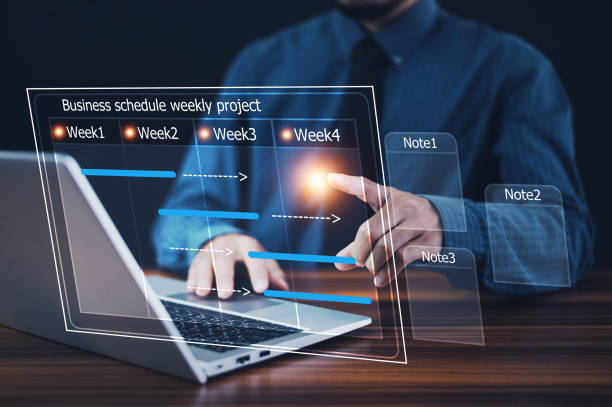Velocity Model Building from Raw Shot Gathers Using Machine Learning


Introduction
Velocity model building is a crucial aspect of geophysical exploration, particularly in seismic imaging and reservoir characterization. It involves creating a model that accurately represents the subsurface velocity structure based on seismic data. Traditionally, this process has been labor-intensive and time-consuming, relying heavily on expert interpretation of raw shot gathers. However, with the advent of machine learning (ML), there is a transformative shift in how velocity models are developed. This article explores the methodologies, benefits, challenges, and future prospects of using machine learning for velocity model building from raw shot gathers.
You Can Also Read About: Exploring Glendale AZ: The Rise of Artificial Intelligence Classes
Understanding Shot Gathers
Shot gathers are collections of seismic data recorded over time from a specific seismic source (the “shot”). These data sets are typically used to analyze the subsurface formations by measuring the time it takes for seismic waves to travel through different materials and return to the surface. The raw shot gathers contain a wealth of information, but they are often noisy and complex, making interpretation difficult.
Components of Shot Gathers
- Seismic Waves: The primary data captured in a shot gather are seismic waves, which can be classified as P-waves (primary or compressional waves) and S-waves (secondary or shear waves).
- Time: Each trace in a shot gather represents the recorded seismic waveforms as a function of time, which is essential for determining the velocity of the subsurface materials.
- Amplitude: The amplitude of the seismic waves provides insights into the properties of the materials they pass through, such as density and porosity.
- Noise: Raw shot gathers often contain noise from various sources, including environmental factors, man-made vibrations, and instrumentation errors, which can obscure the useful signals.
The Role of Velocity Models in Seismic Interpretation
Velocity models are essential for converting seismic data from time domain to depth domain, allowing geoscientists to visualize and interpret the subsurface structures accurately. These models serve several key purposes:
- Depth Conversion: By estimating the velocity of seismic waves through different geological layers, velocity models facilitate the conversion of time-based seismic data into depth-based images.
- Migration: Velocity models are used to apply migration techniques, which correct for the effects of wave propagation, leading to improved imaging of subsurface features.
- Reservoir Characterization: Accurate velocity models help in identifying potential hydrocarbon reservoirs, assessing their size, and estimating their viability.
- Predictive Modeling: Velocity models can also be used in predictive modeling to forecast the behavior of subsurface fluids and gases.
Traditional Approaches to Velocity Model Building
Historically, velocity model building has relied on several methods:
- Manual Interpretation: Geoscientists would manually interpret shot gathers, identifying key reflections and estimating velocities based on their expertise. This approach is subjective and can lead to inconsistencies.
- Tomography: This technique involves using travel time data from seismic waves to iteratively refine the velocity model. It can be computationally intensive and may struggle with complex geological structures.
- Layer Cake Models: Simple velocity models often assume uniform layers. While these models are easy to implement, they fail to capture the complexities of real geological formations.
- Refraction Analysis: This method involves analyzing the refraction of seismic waves at interfaces to estimate velocities. However, it can be limited in areas with complex geology.
Limitations of Traditional Methods
- Subjectivity: Manual interpretation can lead to human error and bias, affecting the reliability of the velocity model.
- Time-Consuming: Traditional methods often require extensive time and labor, delaying project timelines.
- Inability to Handle Complexity: Complex geological structures can lead to inaccurate velocity models when using conventional approaches.
Machine Learning in Velocity Model Building
Machine learning introduces a paradigm shift in velocity model building by automating the analysis of raw shot gathers. By leveraging algorithms that learn from data, ML can enhance the accuracy and efficiency of velocity model generation.
Key Machine Learning Techniques for Velocity Model Building
- Supervised Learning: This approach involves training models on labeled datasets, where the input is raw shot gathers, and the output is known velocity models. Algorithms such as neural networks and support vector machines can be employed.
- Unsupervised Learning: In cases where labeled data is scarce, unsupervised learning can be used to identify patterns and structures within the raw shot gathers. Techniques such as clustering algorithms can help in grouping similar patterns in the data.
- Deep Learning: Neural networks, particularly convolutional neural networks (CNNs), have shown great promise in processing seismic data. They can automatically extract features from raw shot gathers, enabling faster and more accurate velocity model building.
- Reinforcement Learning: This approach can be used to optimize the velocity model iteratively by rewarding the model for making predictions that closely align with observed data.
Benefits of Using Machine Learning
- Increased Efficiency: ML algorithms can process vast amounts of data quickly, significantly reducing the time required for velocity model building.
- Improved Accuracy: By leveraging large datasets and advanced algorithms, machine learning can enhance the accuracy of velocity models, particularly in complex geological settings.
- Automation: Machine learning reduces the need for manual interpretation, minimizing human error and bias while allowing geoscientists to focus on higher-level analysis.
- Adaptability: ML models can adapt to new data, continuously improving their predictions and performance over time.
Implementing Machine Learning for Velocity Model Building
The implementation of machine learning in velocity model building involves several steps:
1. Data Preparation
Raw shot gathers must be preprocessed to remove noise and enhance signal quality. This may involve techniques such as:
- Filtering: Applying various filters to eliminate unwanted noise while preserving the seismic signals.
- Normalization: Ensuring that the data is scaled appropriately for ML algorithms.
- Segmentation: Dividing the shot gathers into meaningful segments for analysis.
2. Feature Extraction
Machine learning models require relevant features for training. Feature extraction techniques may include:
- Time-Frequency Analysis: Transforming the seismic data into the time-frequency domain to capture important characteristics of the seismic waves.
- Waveform Attributes: Calculating attributes such as amplitude, phase, and frequency, which can provide insights into the subsurface structure.
3. Model Training
Once the data is prepared and features are extracted, the next step is to train the machine learning model. This involves selecting appropriate algorithms, tuning hyperparameters, and training the model on labeled datasets.
4. Model Evaluation
Evaluating the performance of the trained model is crucial. Common metrics for evaluation include:
- Mean Squared Error (MSE): Measuring the average squared difference between predicted and actual values.
- R-squared: Evaluating the proportion of variance explained by the model.
5. Model Deployment
After successful training and evaluation, the model can be deployed to predict velocity models from new raw shot gathers. Continuous monitoring and updating of the model may be necessary to maintain accuracy.
Challenges of Machine Learning in Velocity Model Building
While machine learning offers significant advantages, there are challenges to its implementation:
1. Data Quality and Availability
The effectiveness of machine learning algorithms heavily depends on the quality and quantity of available data. Inconsistent or incomplete datasets can lead to unreliable models.
2. Interpretability
Many machine learning models, particularly deep learning models, can be seen as “black boxes,” making it difficult for geoscientists to interpret the results and understand the underlying processes.
3. Computational Resources
Training complex machine learning models requires substantial computational resources. Organizations may need to invest in high-performance computing capabilities to leverage ML effectively.
4. Integration with Existing Workflows
Integrating machine learning approaches into existing seismic interpretation workflows may encounter resistance from traditionalists who are accustomed to conventional methods.
Case Studies: Successful Applications of Machine Learning
Several companies and research institutions have successfully implemented machine learning for velocity model building:
1. Equinor
Equinor, a leading energy company, has been at the forefront of integrating machine learning into its seismic workflows. By utilizing deep learning algorithms on raw shot gathers, they achieved significant improvements in the accuracy of their velocity models, leading to better reservoir characterization and exploration success.
2. TotalEnergies
TotalEnergies has also embraced machine learning for velocity model building. Their approach involves automating the interpretation of shot gathers, resulting in accelerated project timelines and reduced costs.
3. Academic Research
Numerous academic studies have demonstrated the effectiveness of machine learning in seismic interpretation. Research has shown that convolutional neural networks can outperform traditional methods in creating velocity models from raw seismic data.
The Future of Velocity Model Building with Machine Learning
As machine learning continues to evolve, its application in velocity model building will likely expand. Here are some future trends to watch for:
1. Advanced Algorithms
The development of more sophisticated algorithms, including hybrid models that combine different ML techniques, will enhance predictive capabilities and accuracy.

2. Real-Time Processing
With the advancement of computational power, real-time processing of seismic data using machine learning will become feasible, enabling immediate insights during field operations.
3. Interdisciplinary Collaboration
Collaboration between geoscientists, data scientists, and machine learning experts will foster innovative solutions and improve the integration of ML into seismic workflows.
4. Ethics and Responsibility
As machine learning becomes more prevalent, discussions surrounding ethical considerations and responsible AI usage in geophysical exploration will gain prominence.
Conclusion
Velocity model building from raw shot gathers using machine learning represents a significant advancement in geophysical exploration. By automating data analysis and enhancing accuracy, machine learning has the potential to revolutionize the way velocity models are created and utilized.


